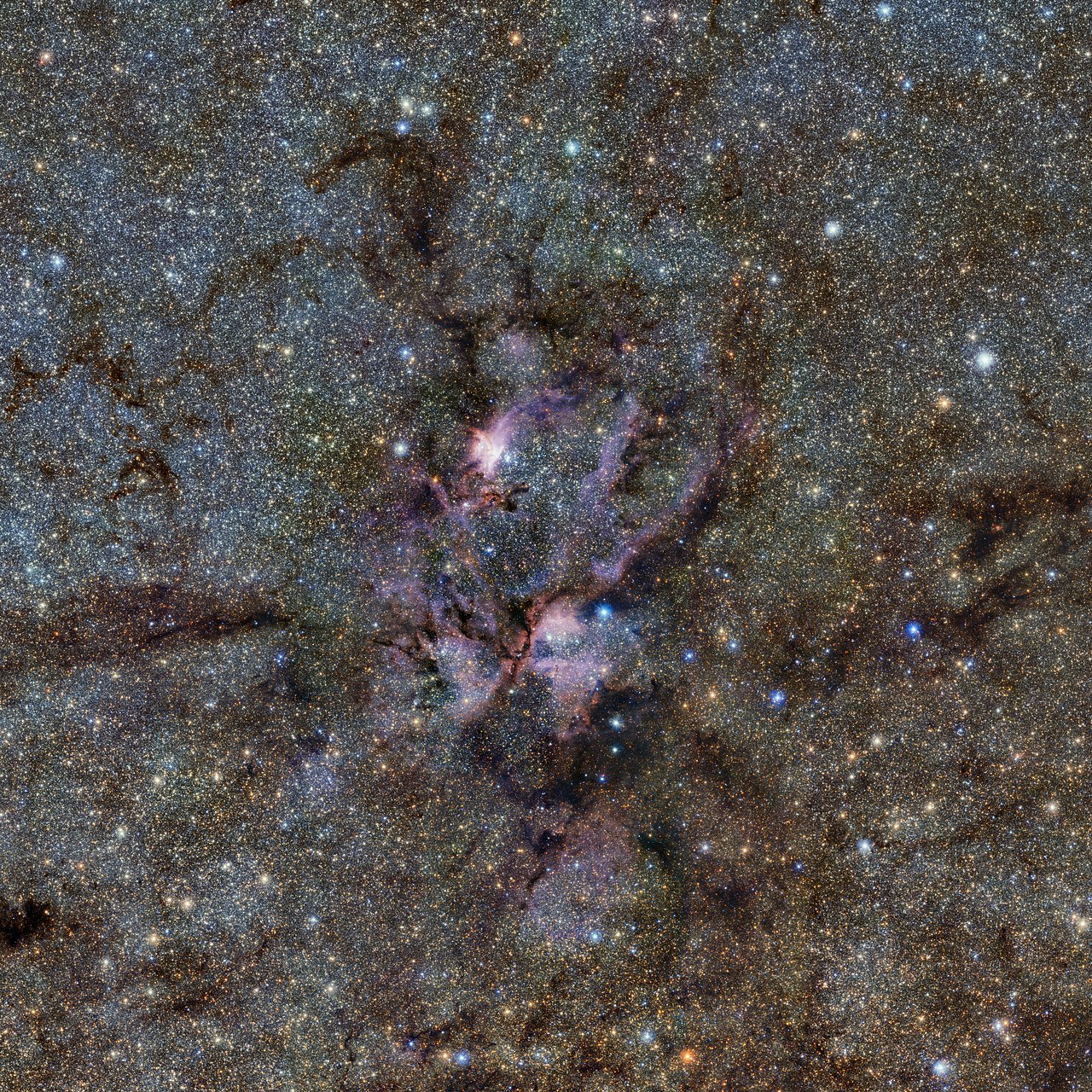
A new image from ESOâs VISTA telescope captures a celestial landscape of glowing clouds of gas and tendrils of dust surrounding hot young stars. This infrared view reveals the stellar nursery known as NGC 6357 in a surprising new light. It was taken as part of a VISTA survey that is currently scanning the Milky Way in a bid to map our galaxyâs structure and explain how it formed.
Located around 8000 light-years away in the constellation of Scorpius (The Scorpion), NGC 6357 â sometimes nicknamed the Lobster Nebula due to its appearance in visible-light images â is a region filled with vast clouds of gas and tendrils of dark dust. These clouds are forming stars, including massive hot stars which glow a brilliant blue-white in visible light.
This image uses infrared data from ESOâs Visible and Infrared Survey Telescope for Astronomy (VISTA) at the Paranal Observatory in Chile. It is just a small part of a huge survey called VISTA Variables in the VÃ*a Láctea (VVV) that is imaging the central parts of the Galaxy (eso1242). The new picture presents a drastically different view to that seen in visible-light images â such as the image taken with the 1.5-metre Danish telescope at La Silla â as infrared radiation can penetrate much of the covering of dust that shrouds the object .
One of the bright young stars in NGC 6357, known as Pismis 24-1, was thought to be the most massive star known â until it was found to actually be made up of at least three huge bright stars, each with a mass of under 100 times that of our Sun. Even so, these stars are still heavyweights â some of the most massive in our Milky Way. Pismis 24-1 is the brightest object in the Pismis 24 star cluster, a bunch of stars that are all thought to have formed at the same time within NGC 6357.
http://www.eso.org/public/news/eso1309/
Behold the Flying Spaghetti Monster! Ramen!




 Reply With Quote
Reply With Quote
